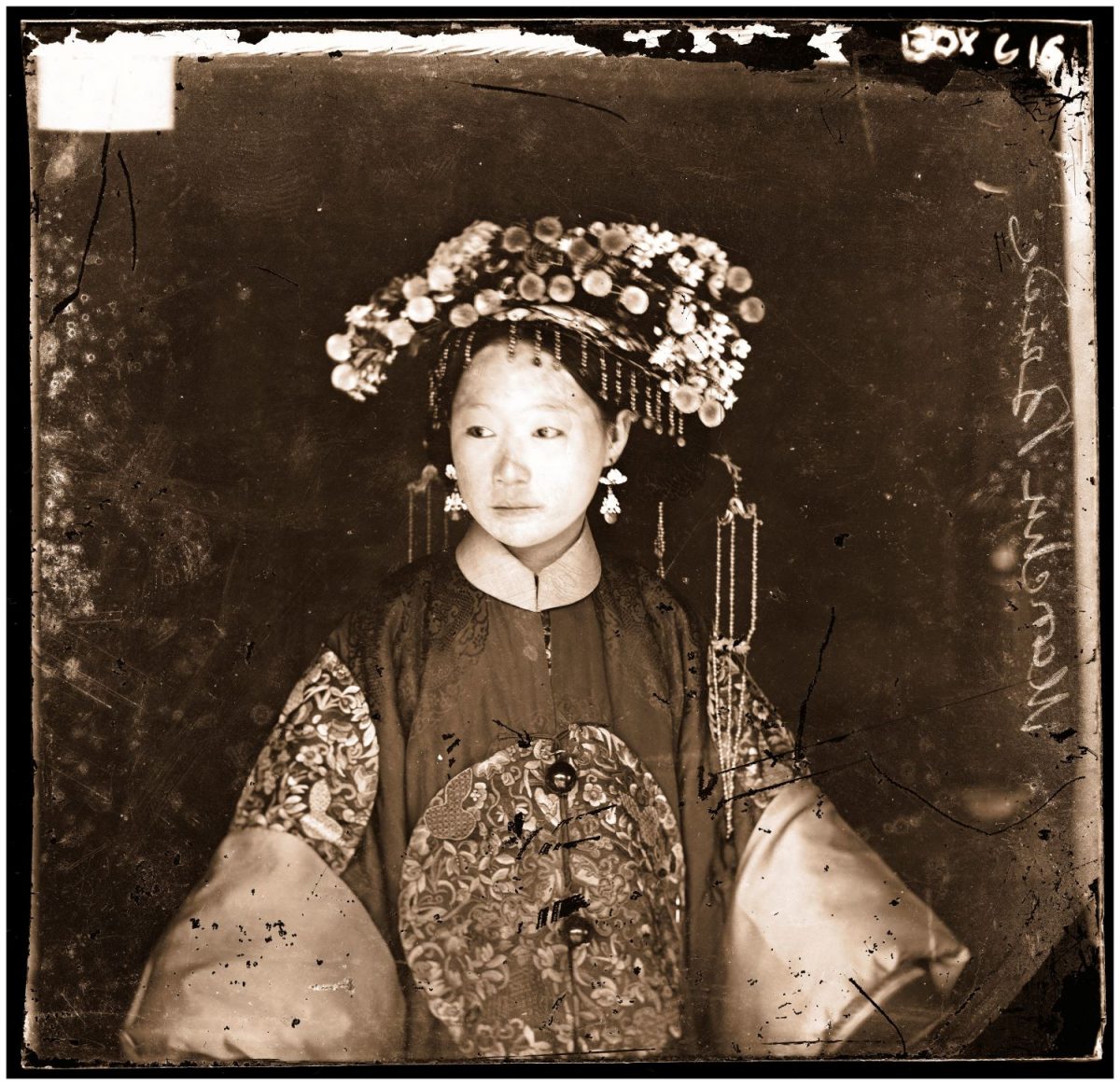
Portrait of Young Manchu Woman in her Wedding Dress.
I suppose it’s the grumble of an older age group that certain words no longer have any real meaning. Words like “ground-breaking” or “pioneering” which are now ascribed to hairdressers from Hackney or vloggers in Auchtermuchty. Not much wrong with this, you might say, language is a living thing which evolves. But I would hold: certain words, certain phrases have immutable meaning. Words like ground-breaking should mean something that changes our perception of the world or changes our understanding of life.
John Thomson (1837-1921) created work that was ground-breaking and pioneering. Far more pioneering than an innovative coiffure or a teen’s product placement on YouTube. Thomson was an Edinburgh-born photographer who travelled to China in the late 1860s. From 1870-71, Thomson travelled extensively in China photographing the people he met, documenting their customs, lives, costumes, and traditions. Thomson feared much of China’s culture would be swamped by the expansion of Empire and the opening of trading routes.
Thomson was a social photographer who used much of his work (see his photographs of poverty in London) to highlight inequalities. While in China, Thomson noted the oppression of women. He documented this in his pictures like the Portrait of Young Manchu Woman in her Wedding Dress (see above), where Thomson noted:
No Manchu maiden can be betrothed until she is fourteen years of age. Usually some elderly woman is employed as a go-between to arrange a marriage, and four primary rules exist to guide the matron. First the lady must be amiable. Secondly she must be a woman of few words. Thirdly she must be of industrious habits, and lastly she must neither want a limb nor an eye and indeed she must be moderately good-looking.
[A wife] is even liable to be beaten by her mother-in-law, and husband too, if she neglects to discharge her duties as general domestic drudge.
Thomson travelled with a camera the size of a large packing crate. He used the collodion process or wet plate process which was a time-consuming and difficult. Thomson hoped his work would bring an appreciation of the rich diversity of ethnicity and culture to Victorian Britain. That he succeeded and his works are still held in high esteem today is testament to Thomson’s pioneering work as a photographer.
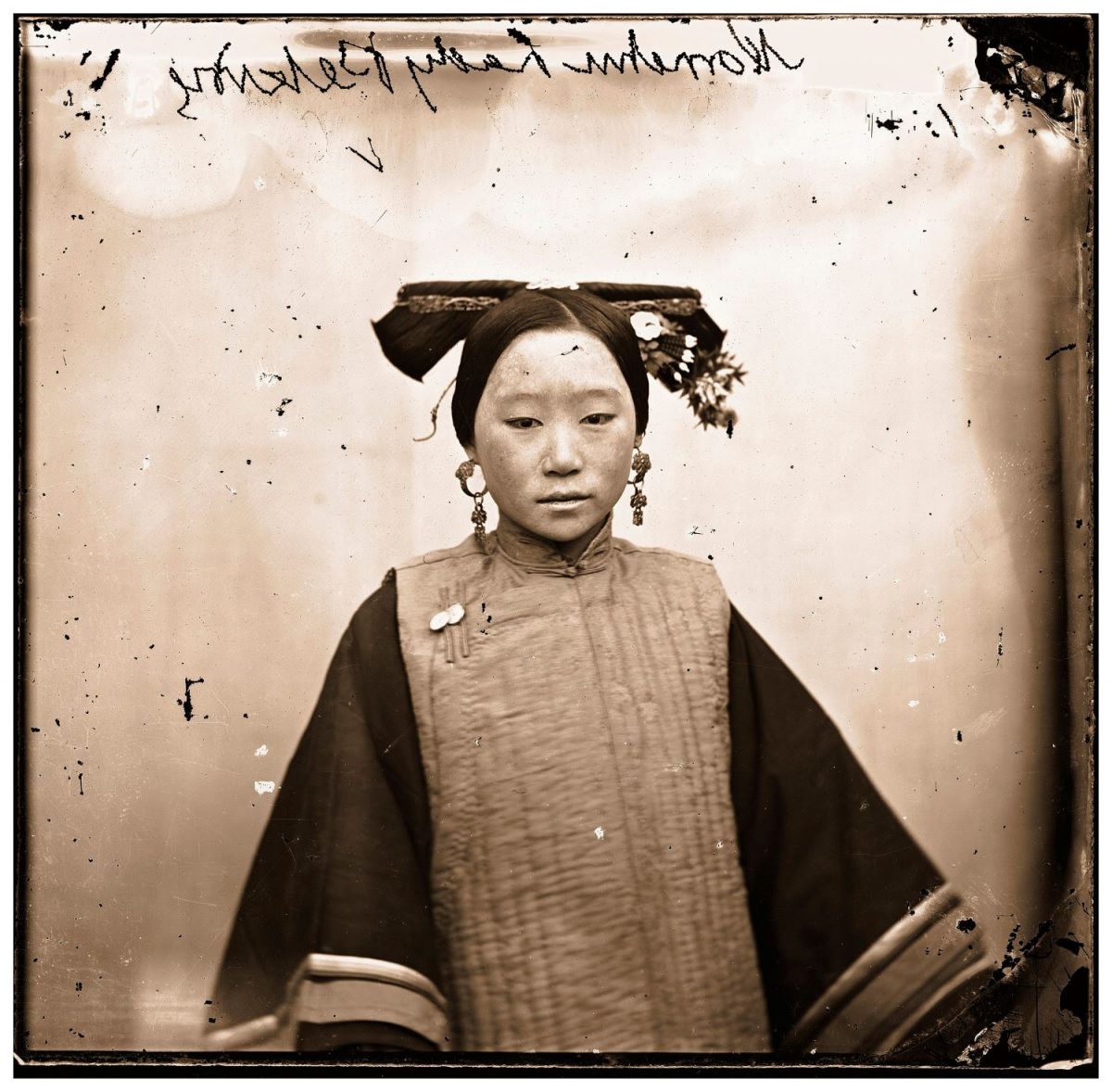
A Manchu lady wearing a coiffure.
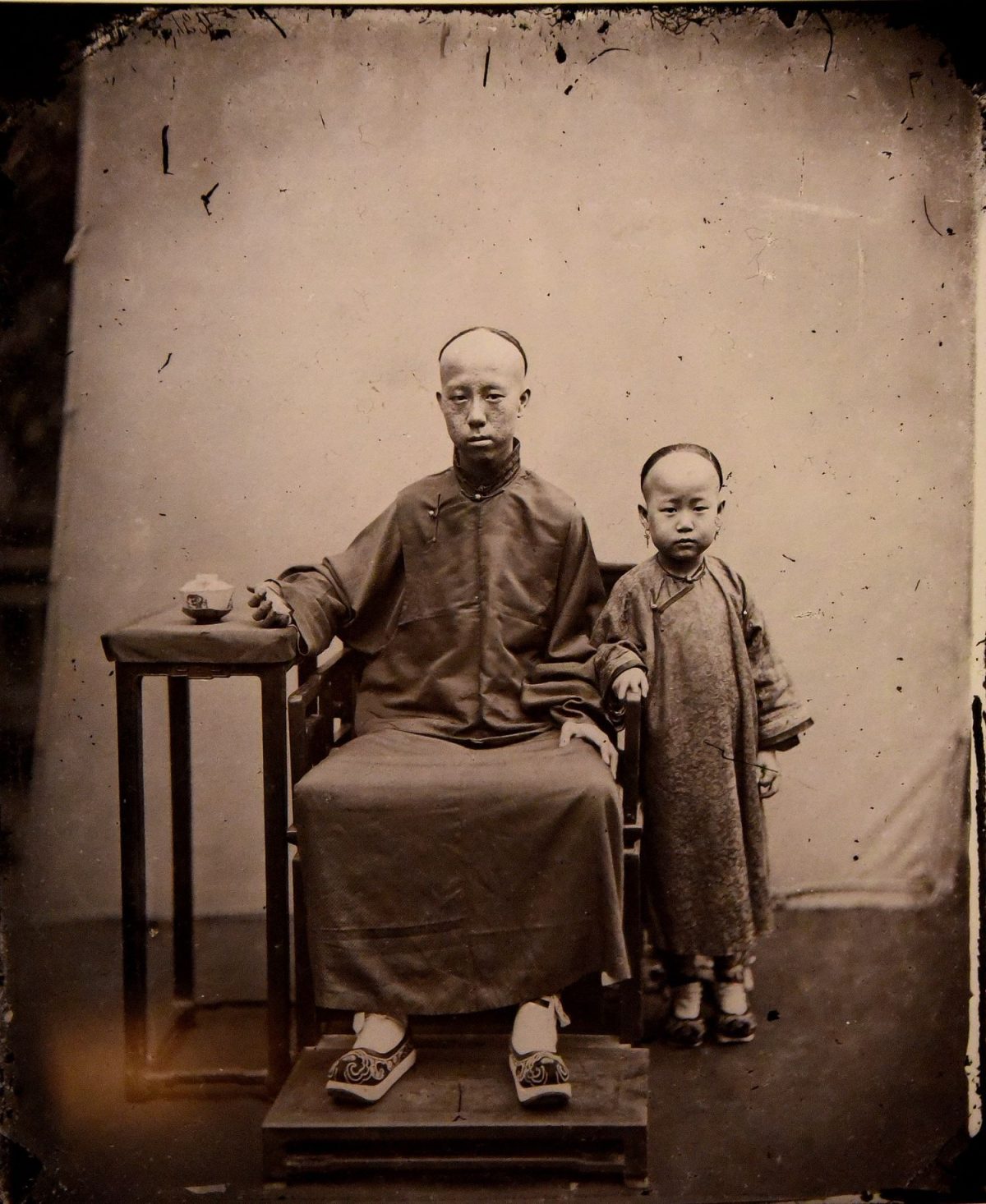
Mandarin and Son.
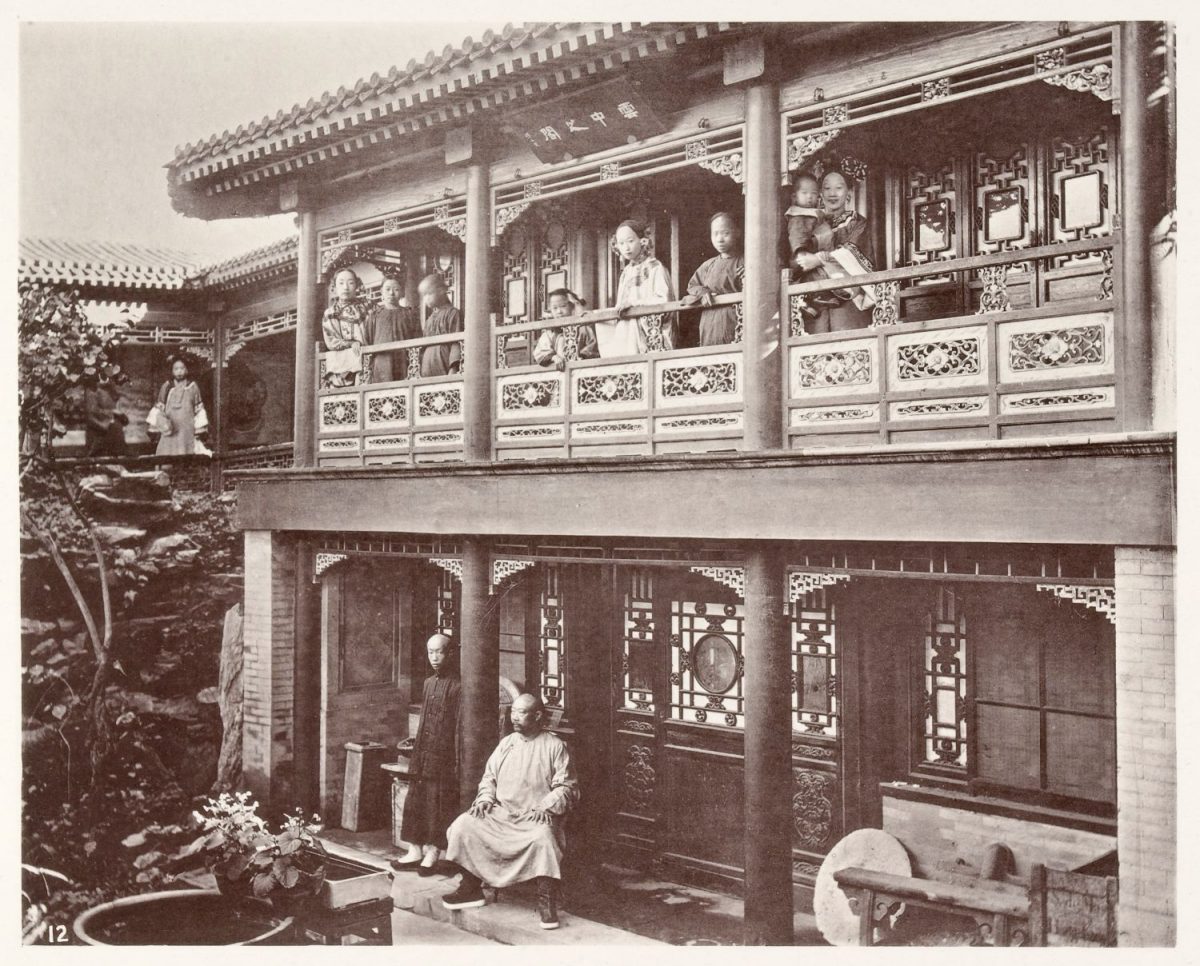
A Mandarin’s house.
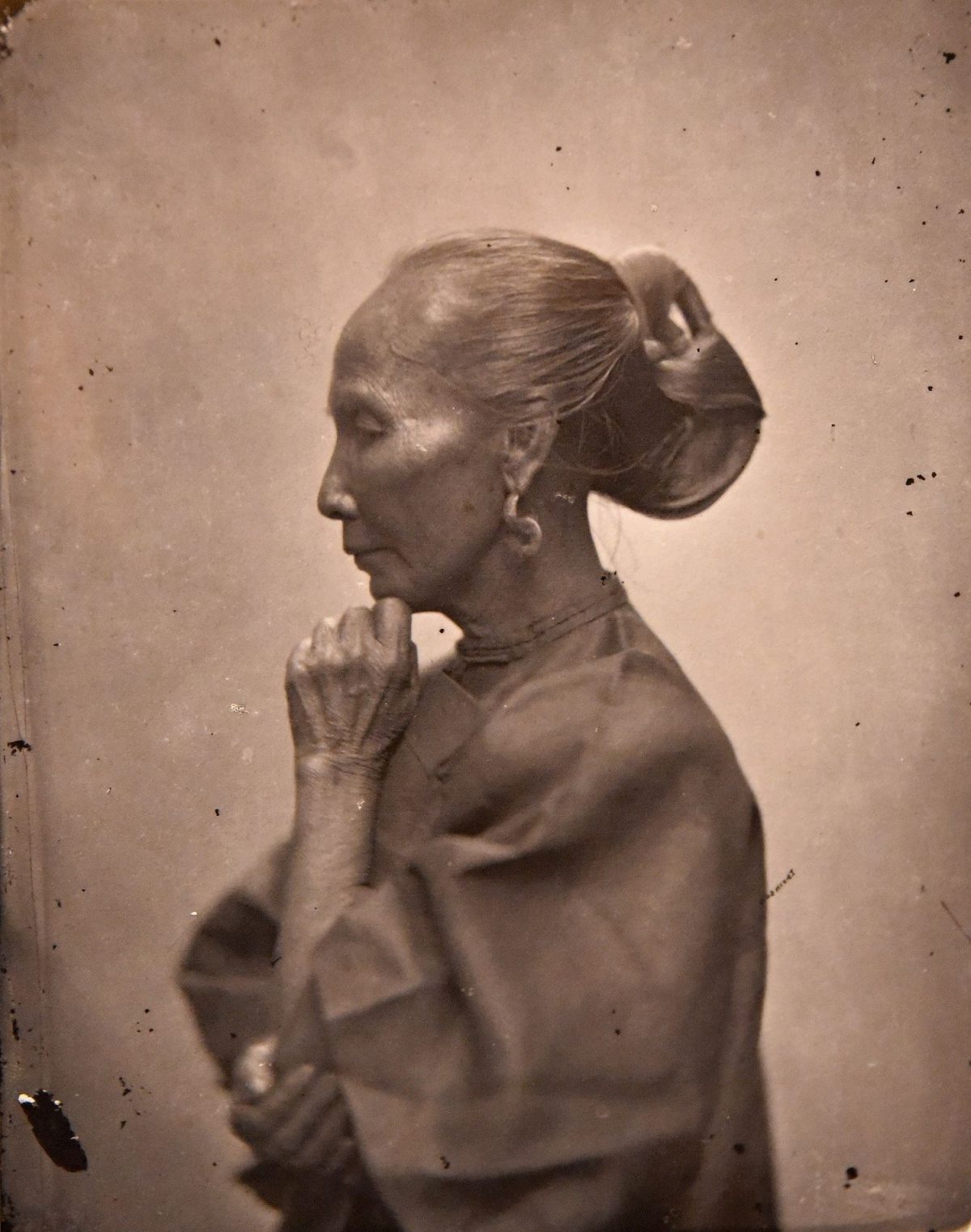
Old Chinese woman with elaborate hair style.
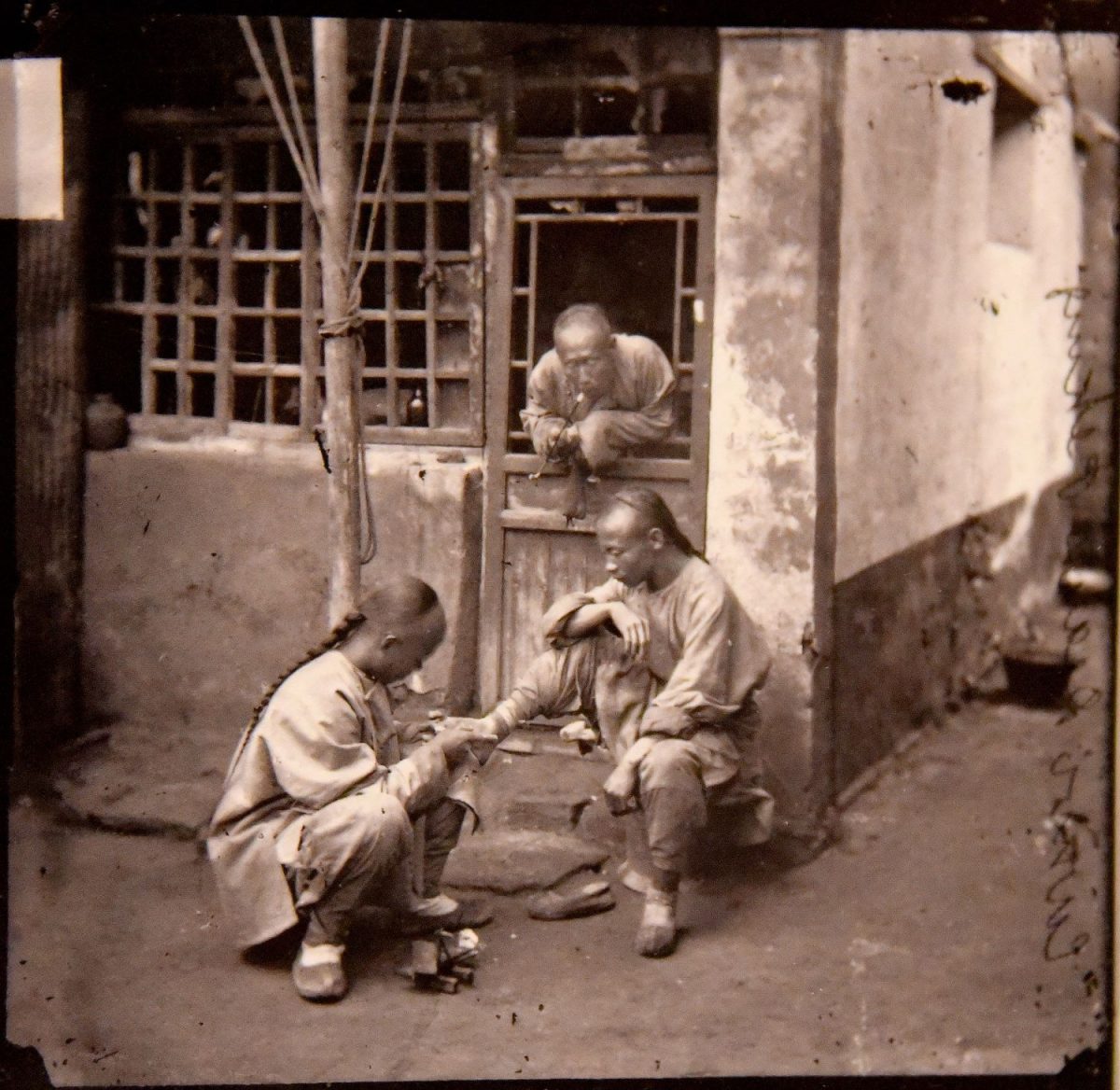
A Pekingese chiropodist.

A painter at work.
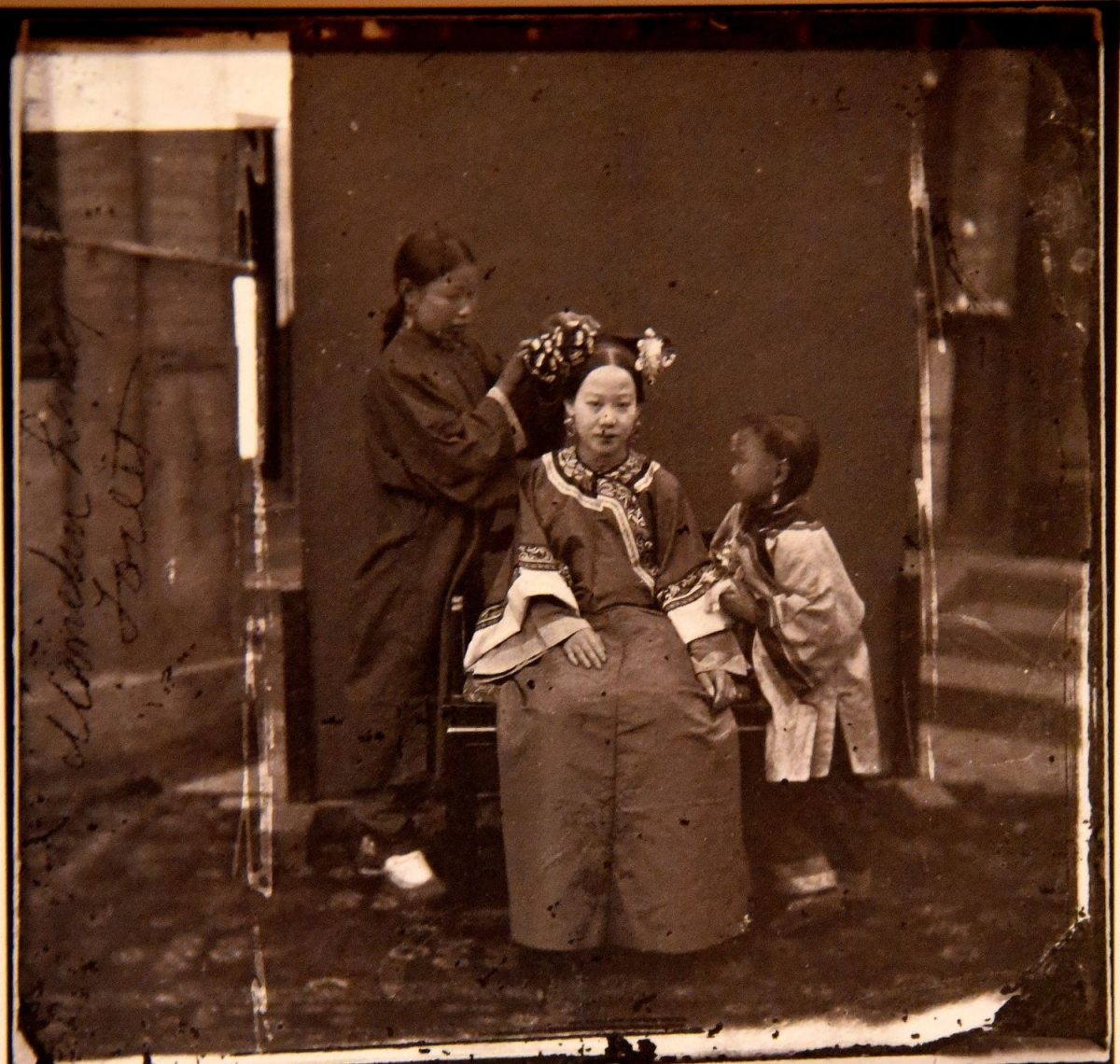
Manchu lady having her hair styled. John Thomson.
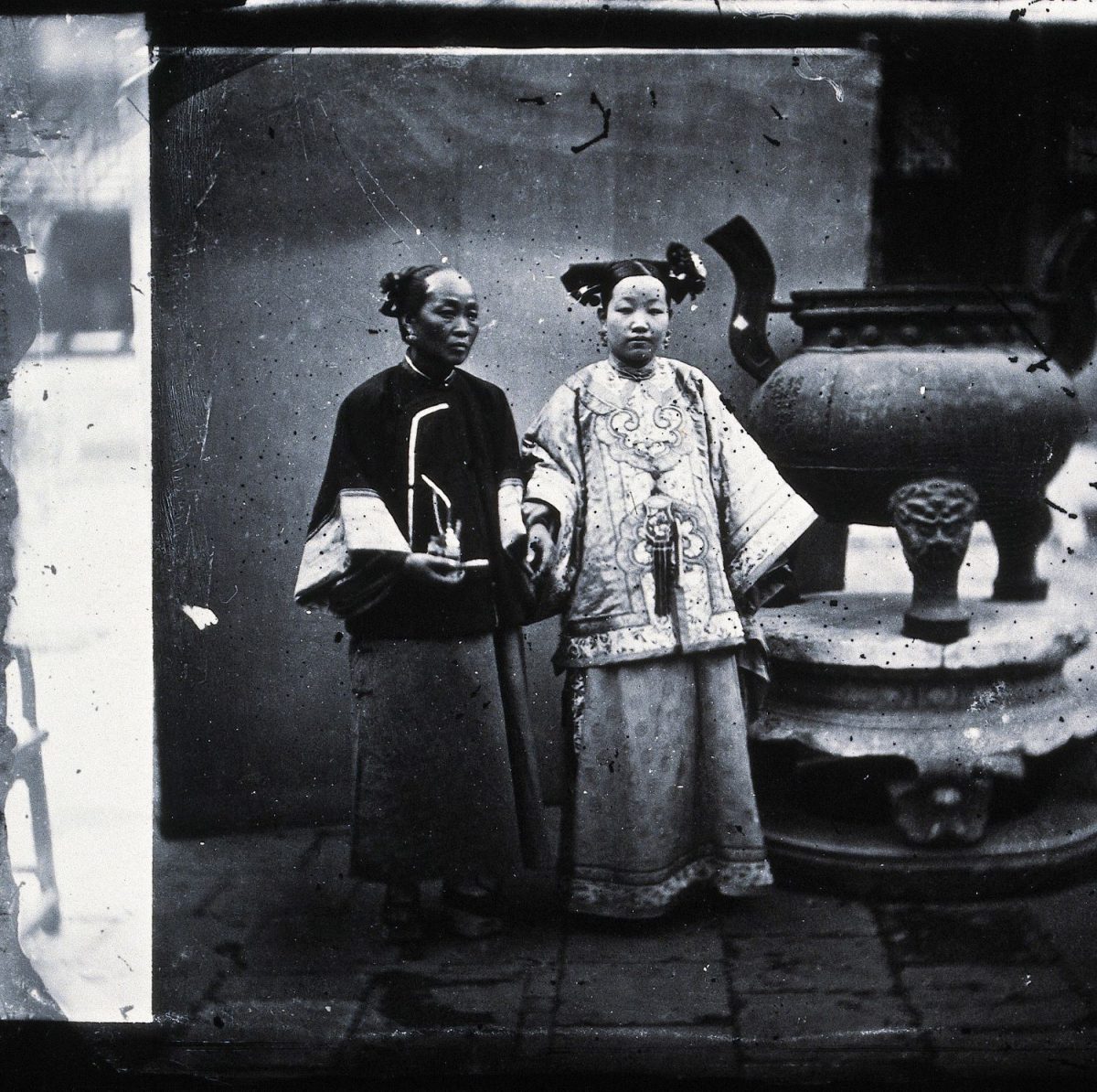
Manchu Lady and her Maid.
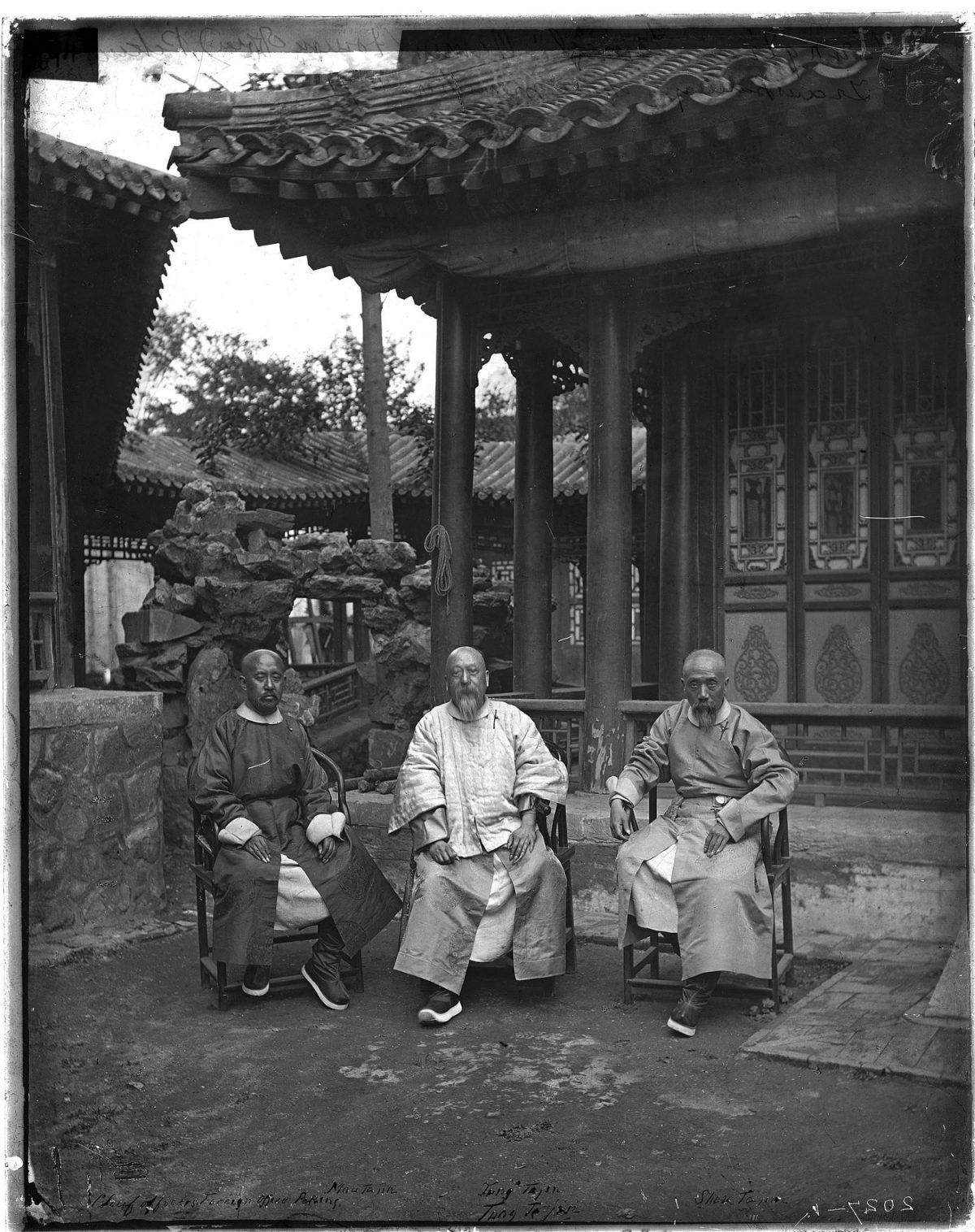
Three men, two older with beards, one younger with a moustache.
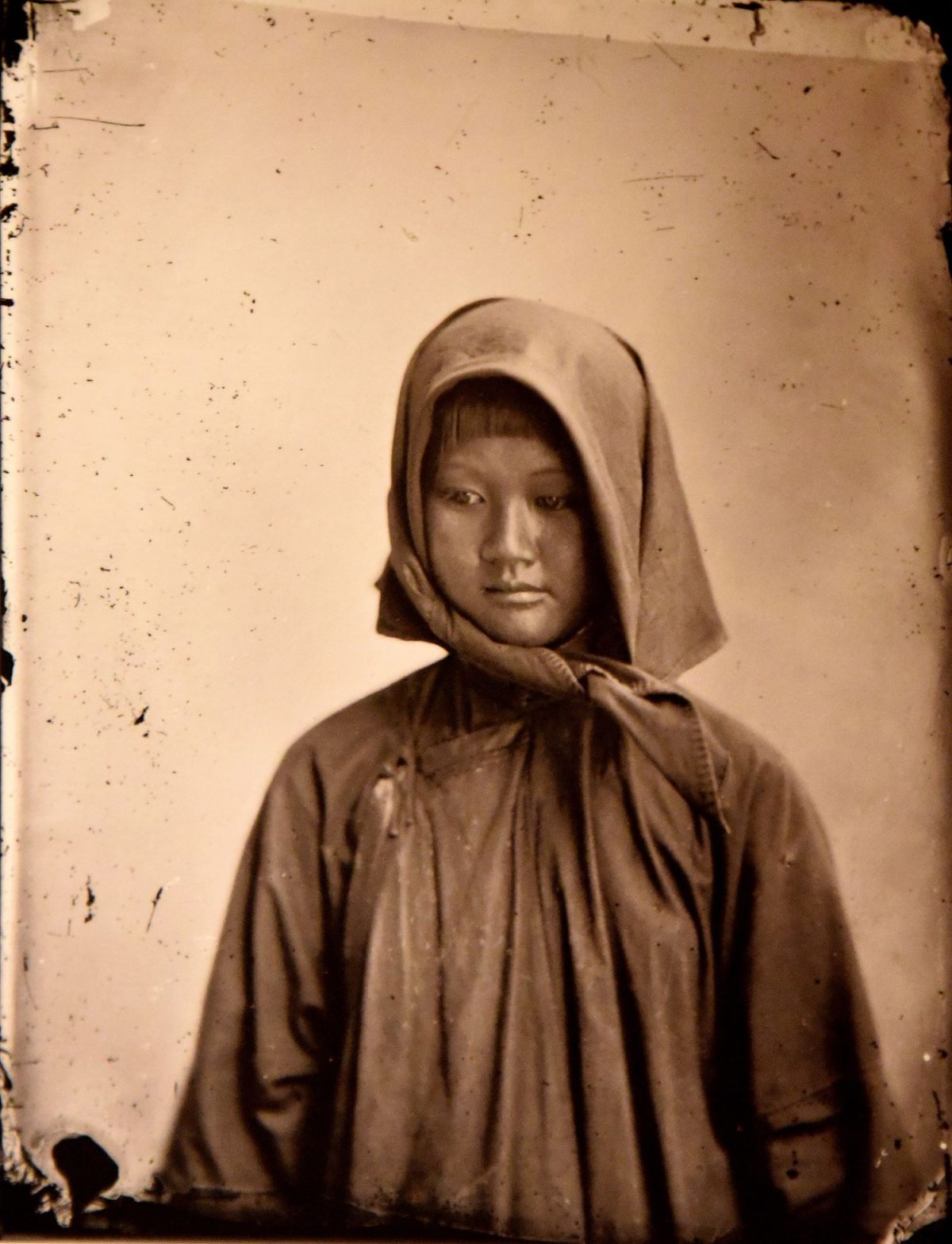
A Cantonese boat girl.
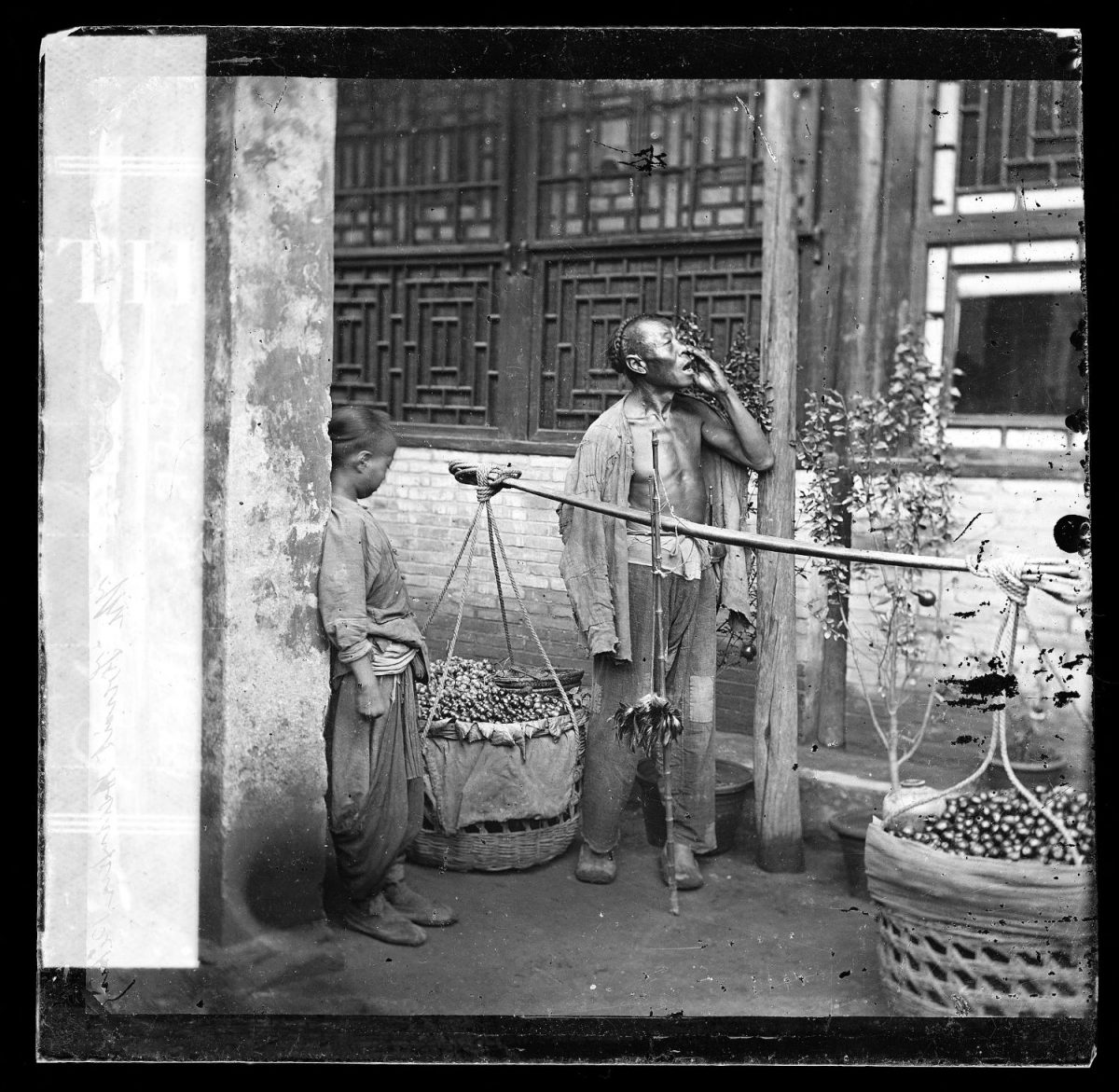
A man, with laden panniers, selling fruit outside a house.
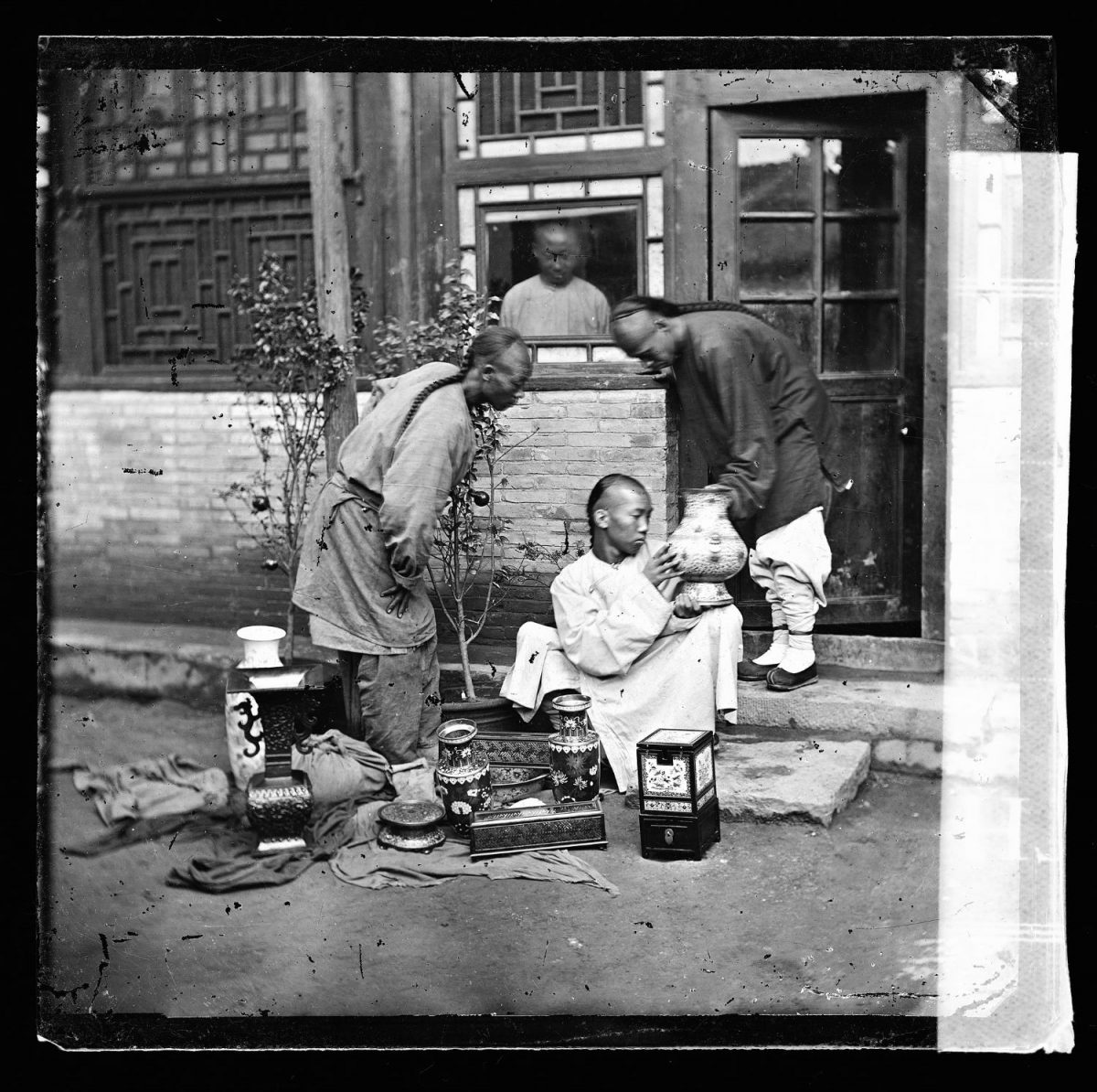
A tradesman selling vases on the street.
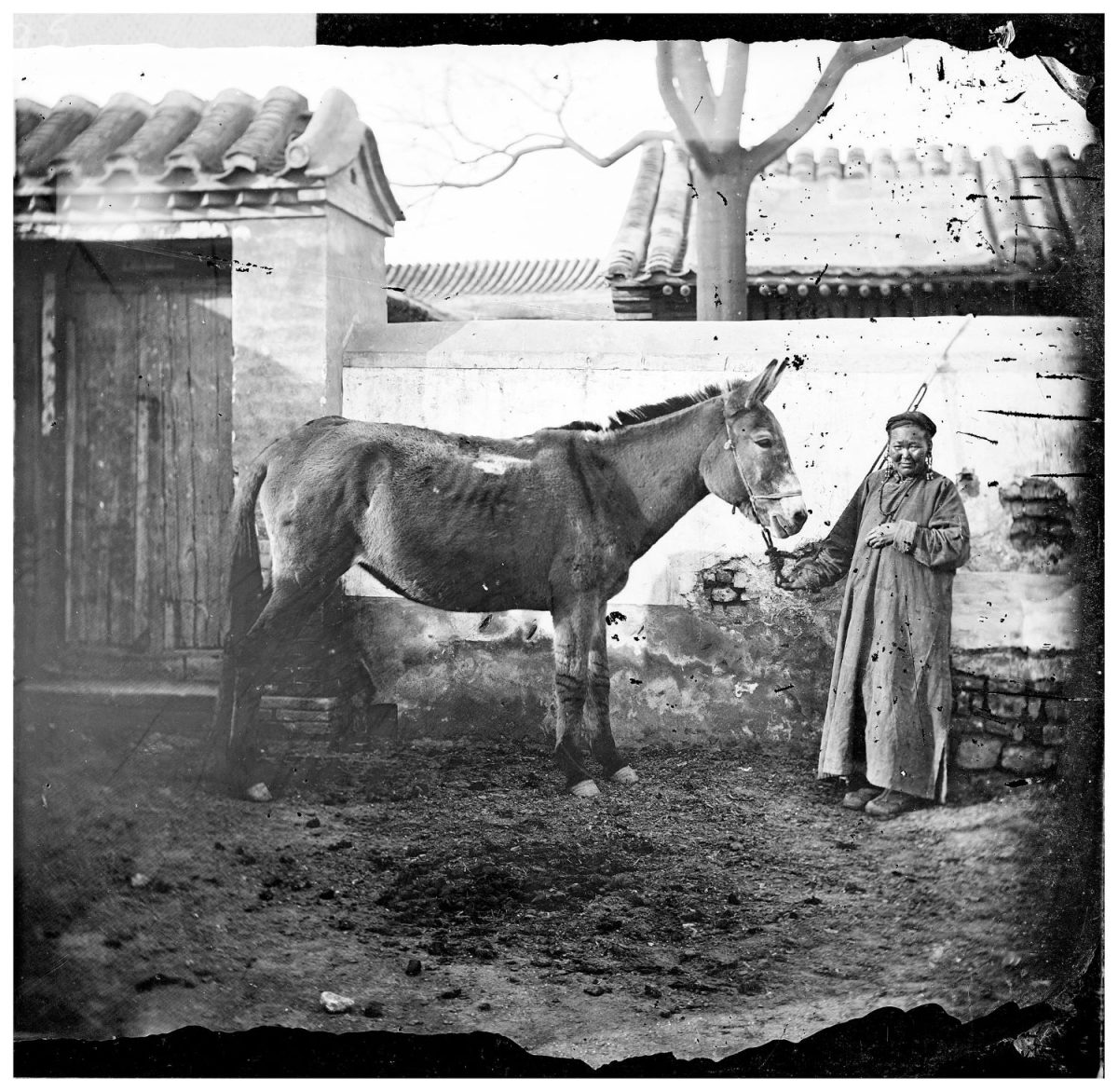
An old Mongol woman and her horse.

A Nightwatchman, Peking.
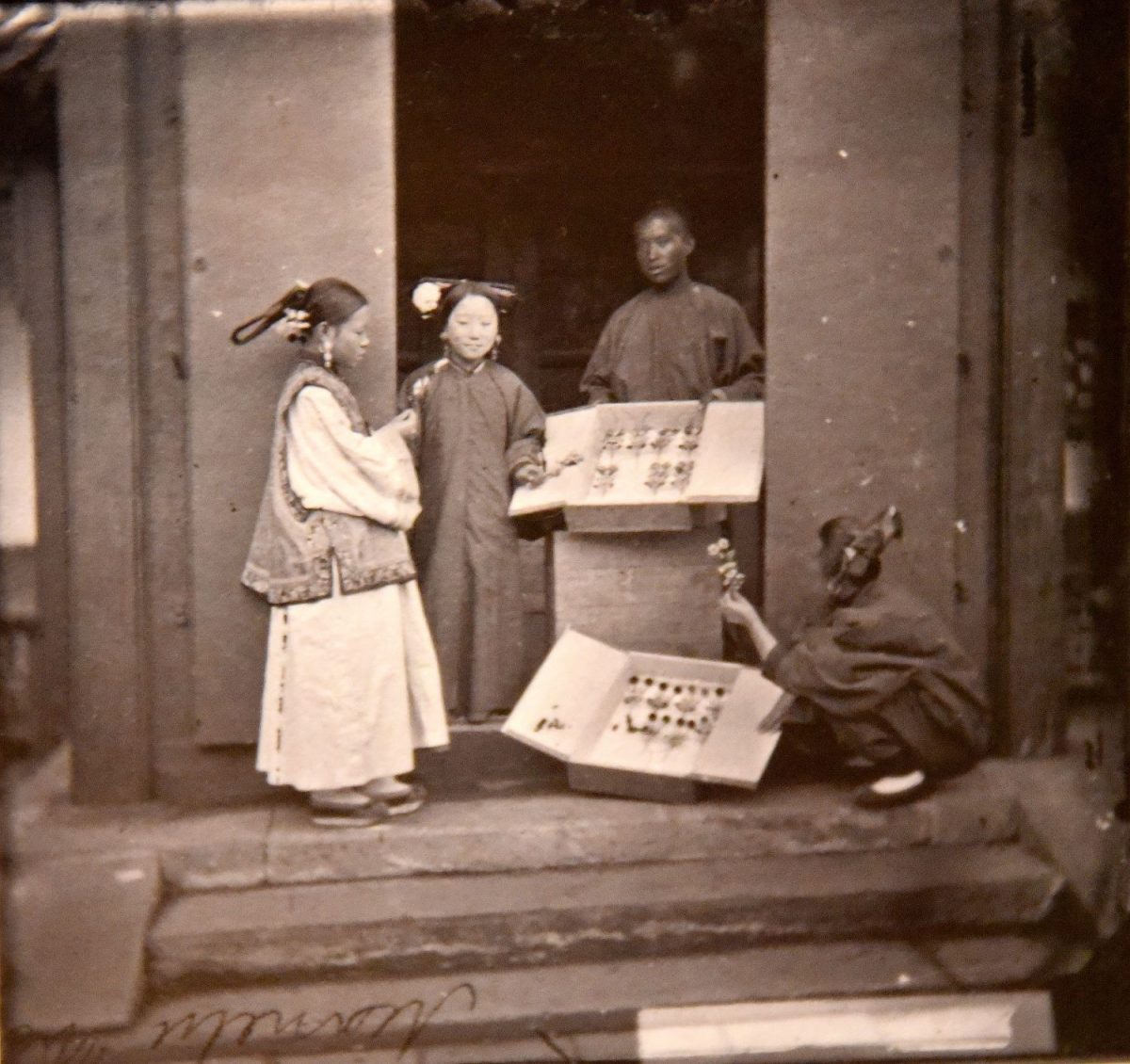
Manchu women buying flowers for their headdress.
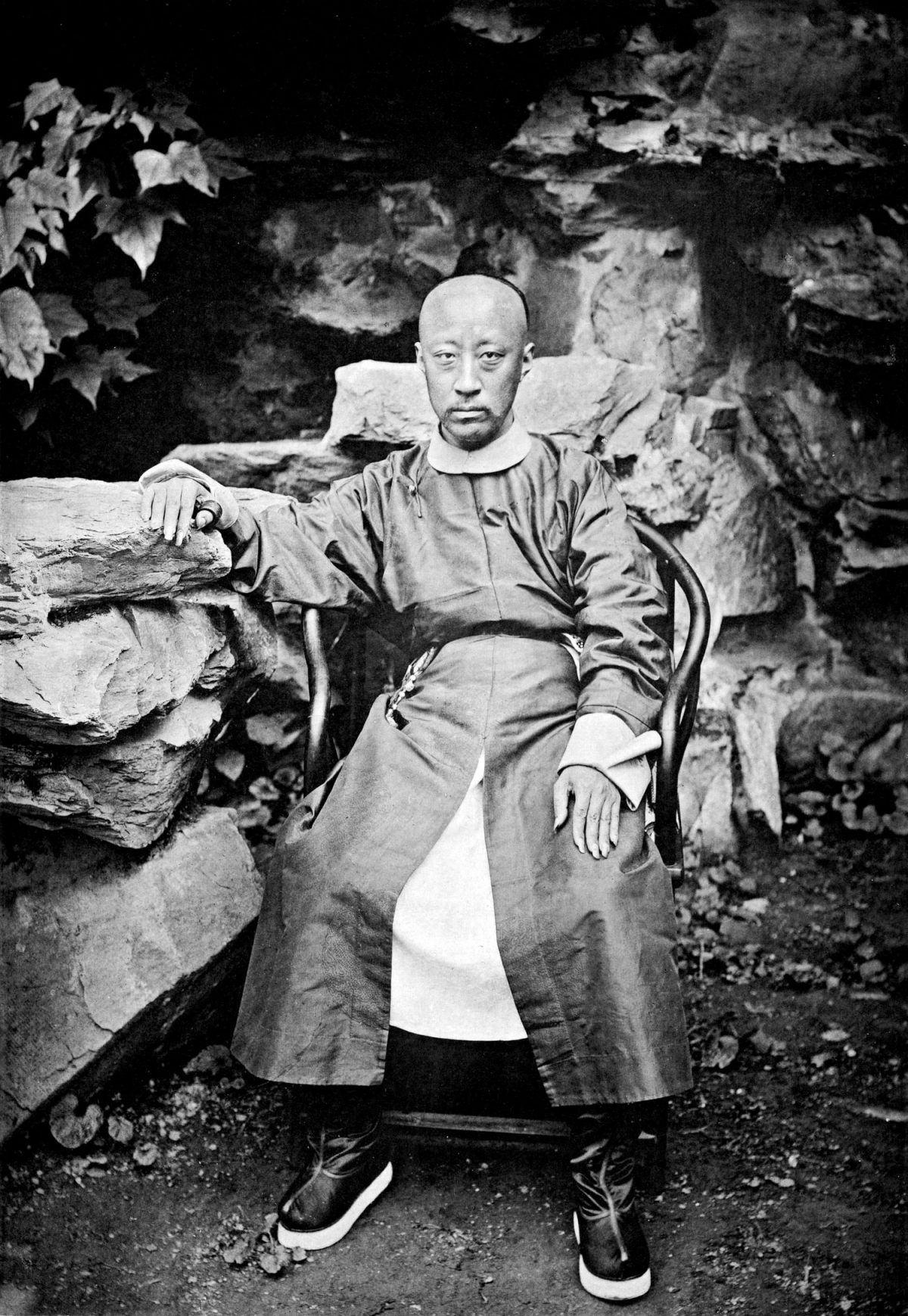
Prince Kung, now about forty years of age, is the sixth son of the Emperor Tao Kwang, who reigned from A.D. 1820 to 1850. He is a younger brother of the late Emperor Hien-foong, and, consequently an uncle to the reigning Emperor Tung-che.
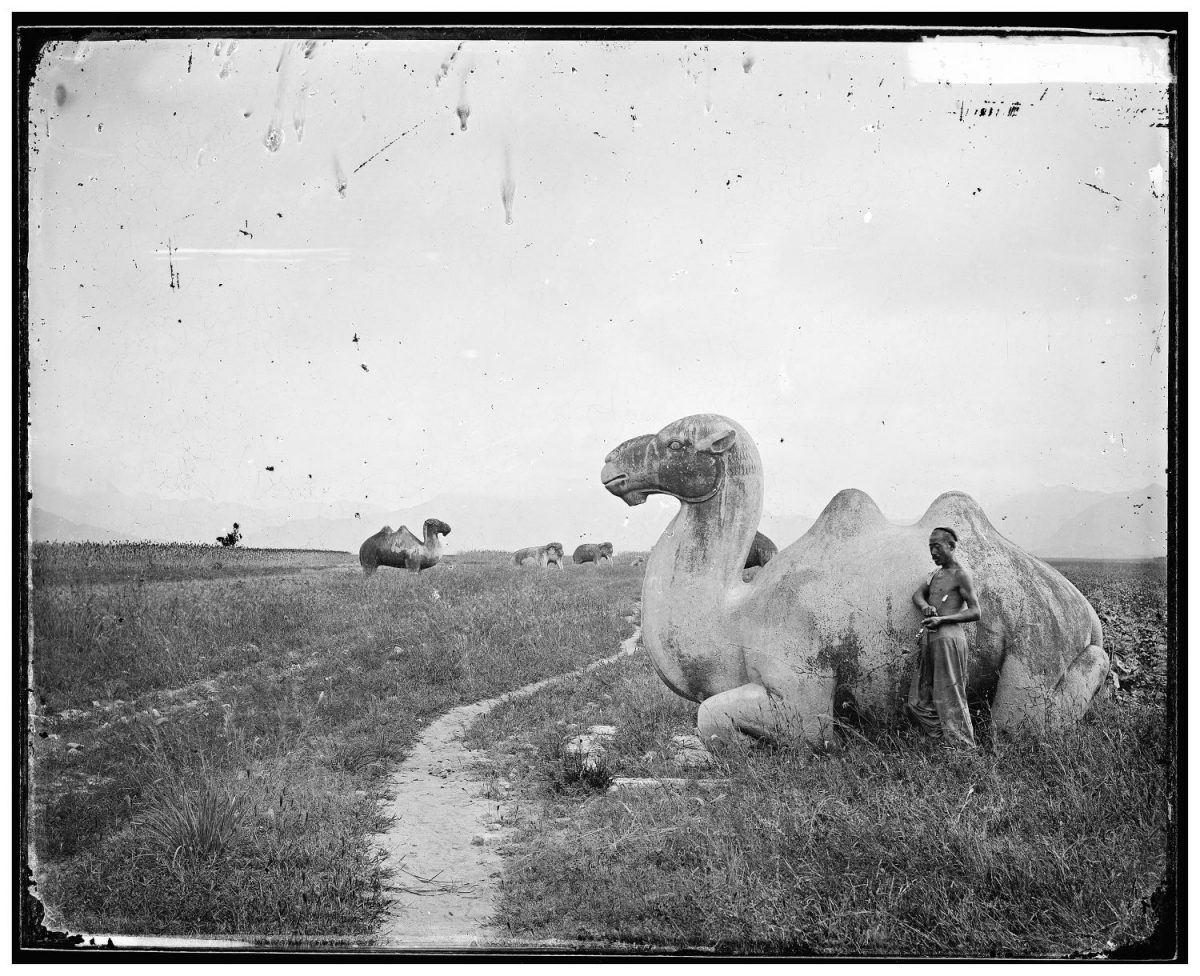
Camel sculptures on the road to the Ming tombs.

Island Pagoda.

Amoy, Fukien province, China: two Manchu soldiers with John Thomson.
Would you like to support Flashbak?
Please consider making a donation to our site. We don't want to rely on ads to bring you the best of visual culture. You can also support us by signing up to our Mailing List. And you can also follow us on Facebook, Instagram and Twitter. For great art and culture delivered to your door, visit our shop.



